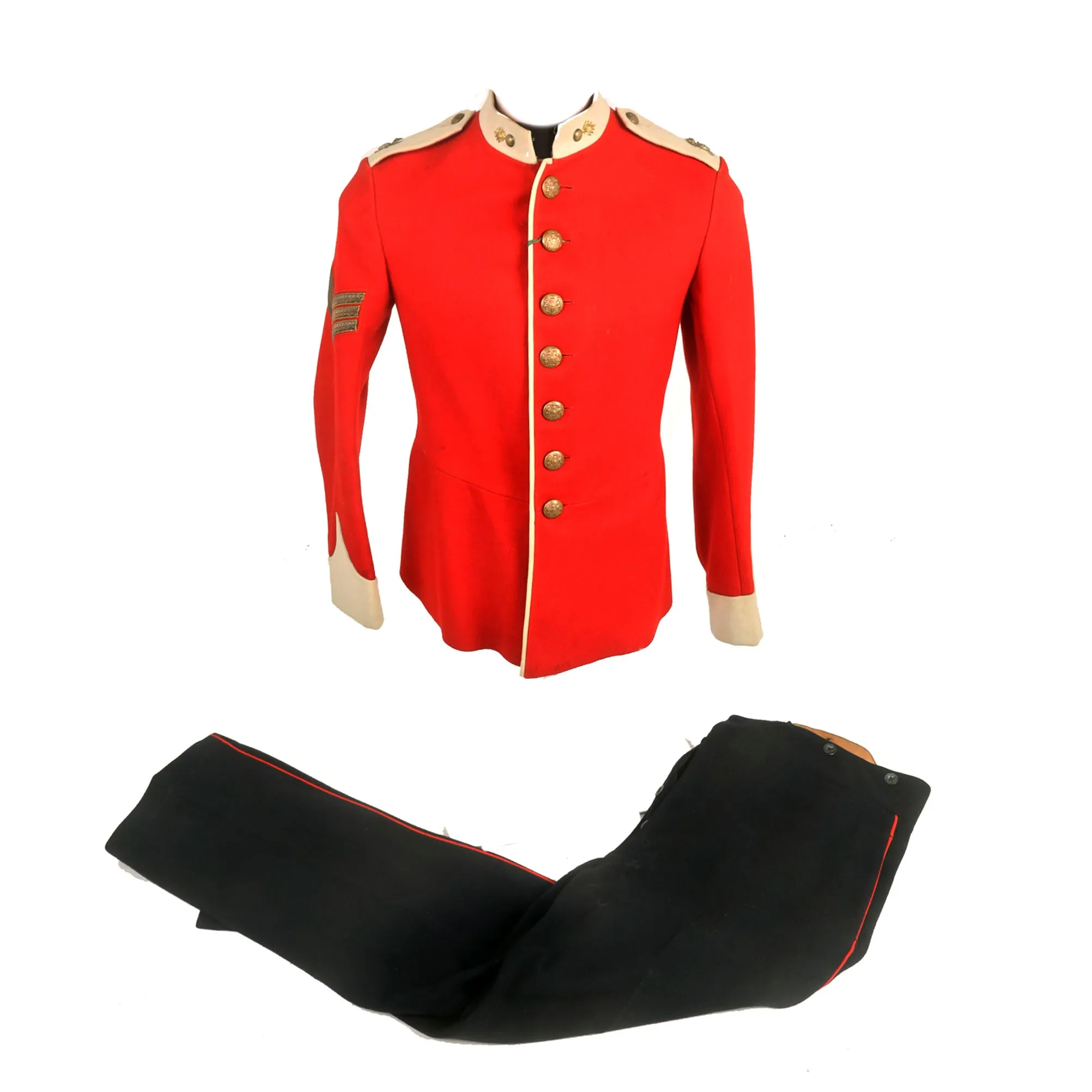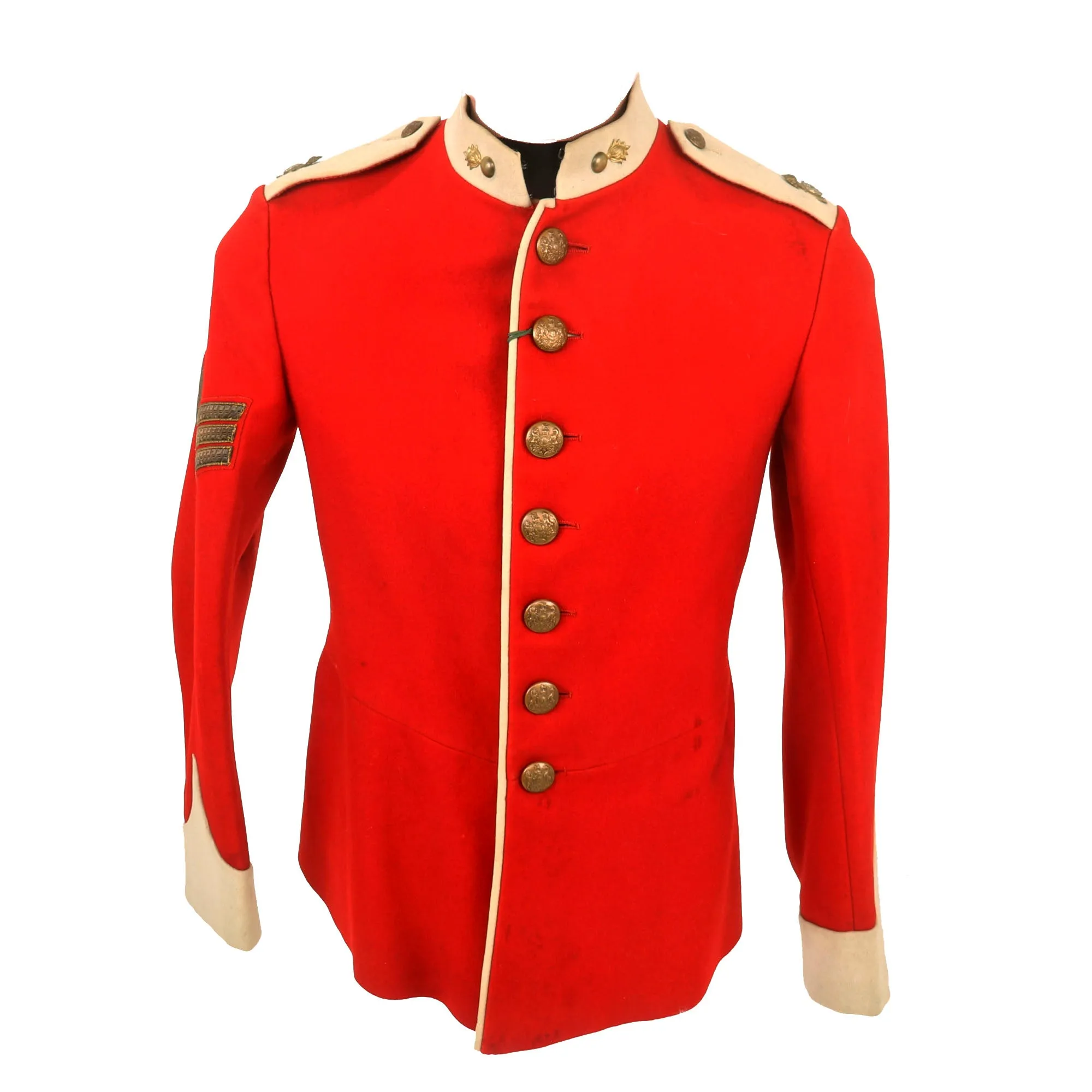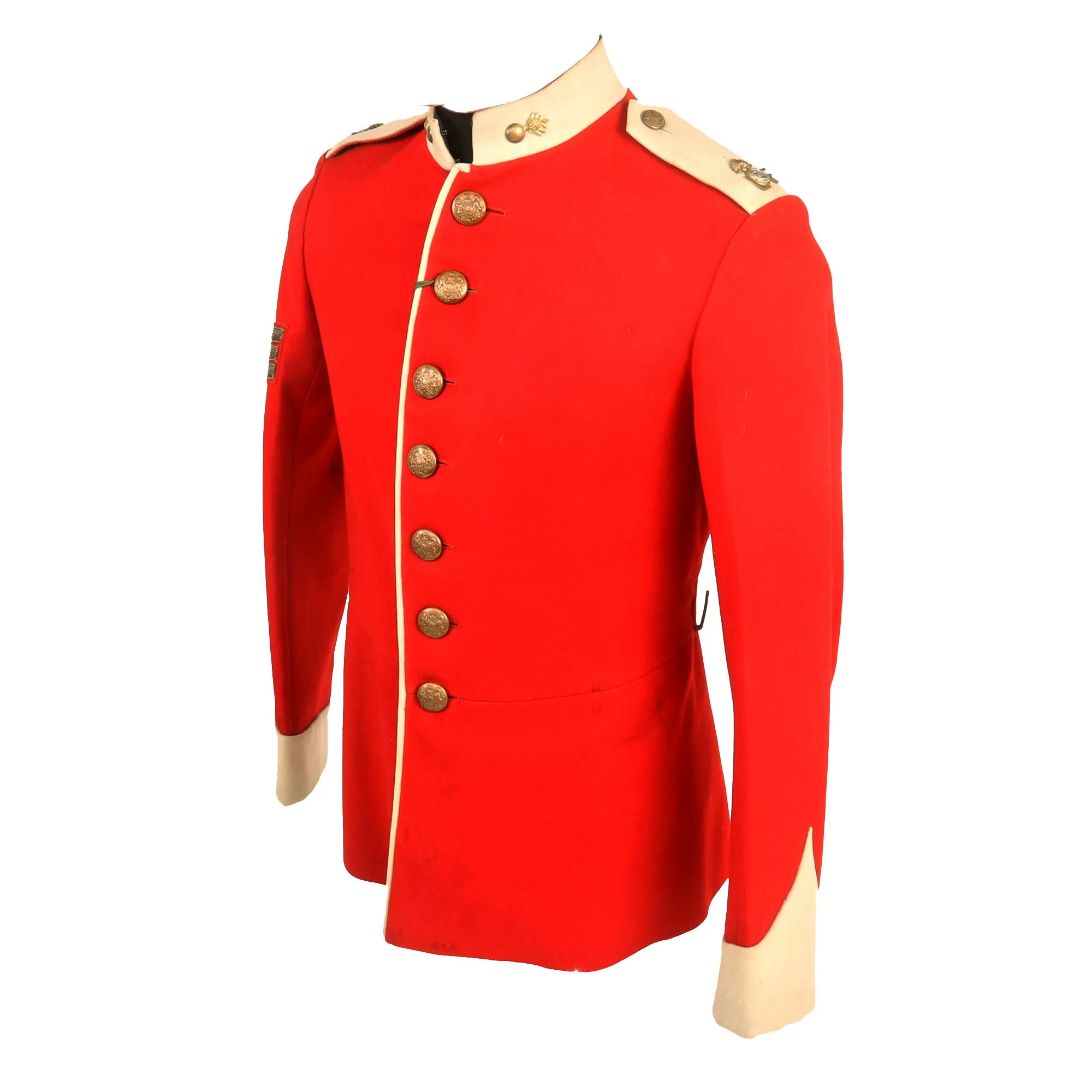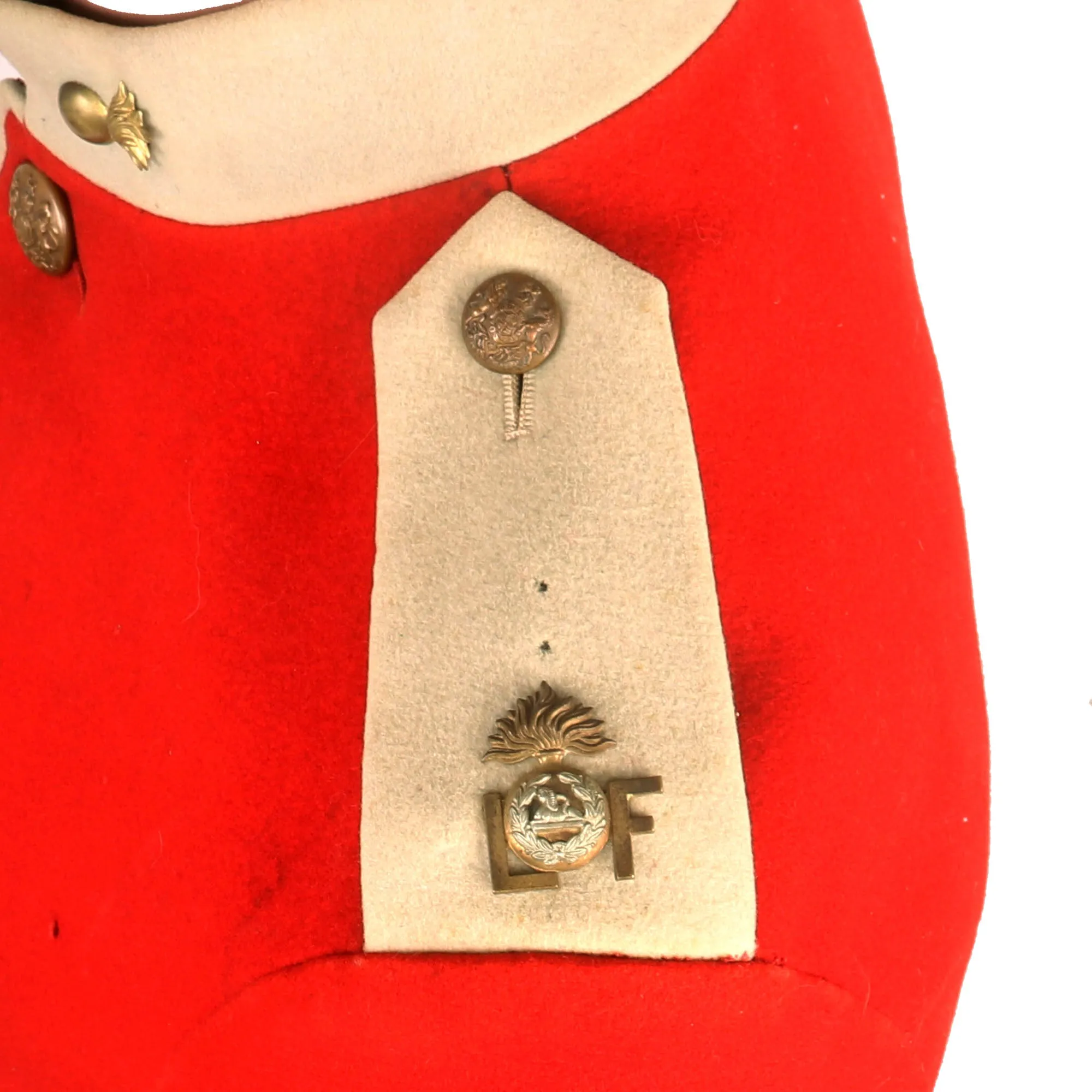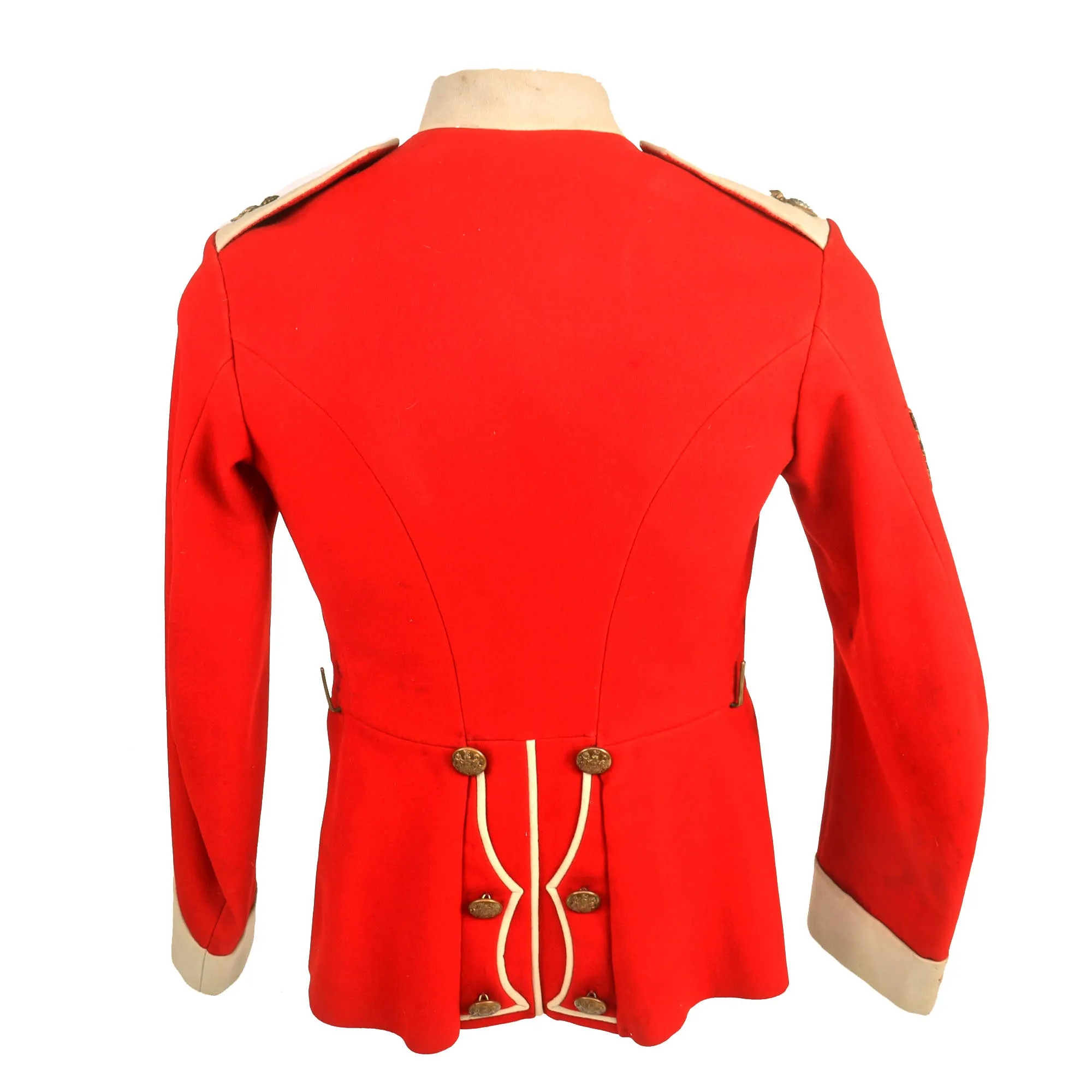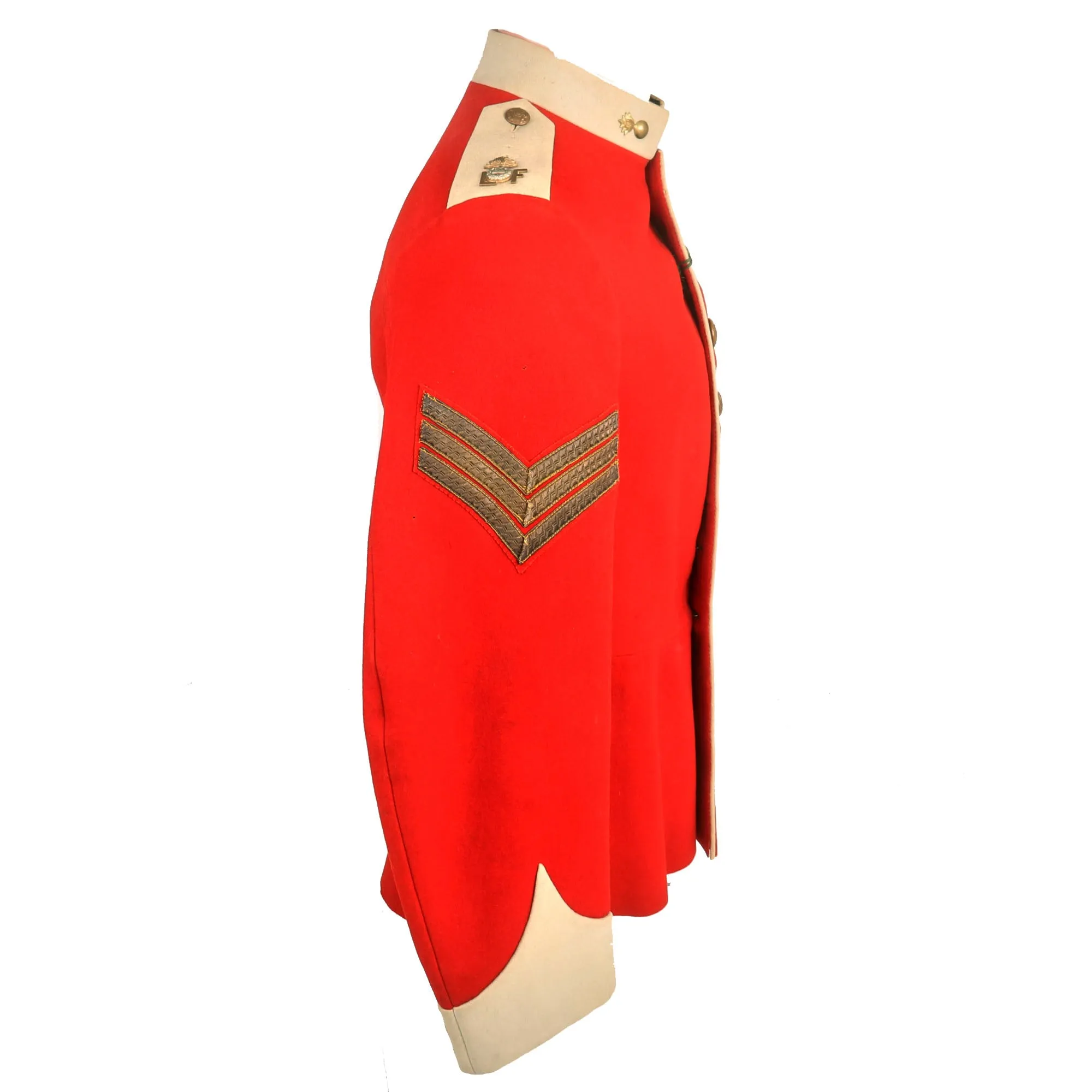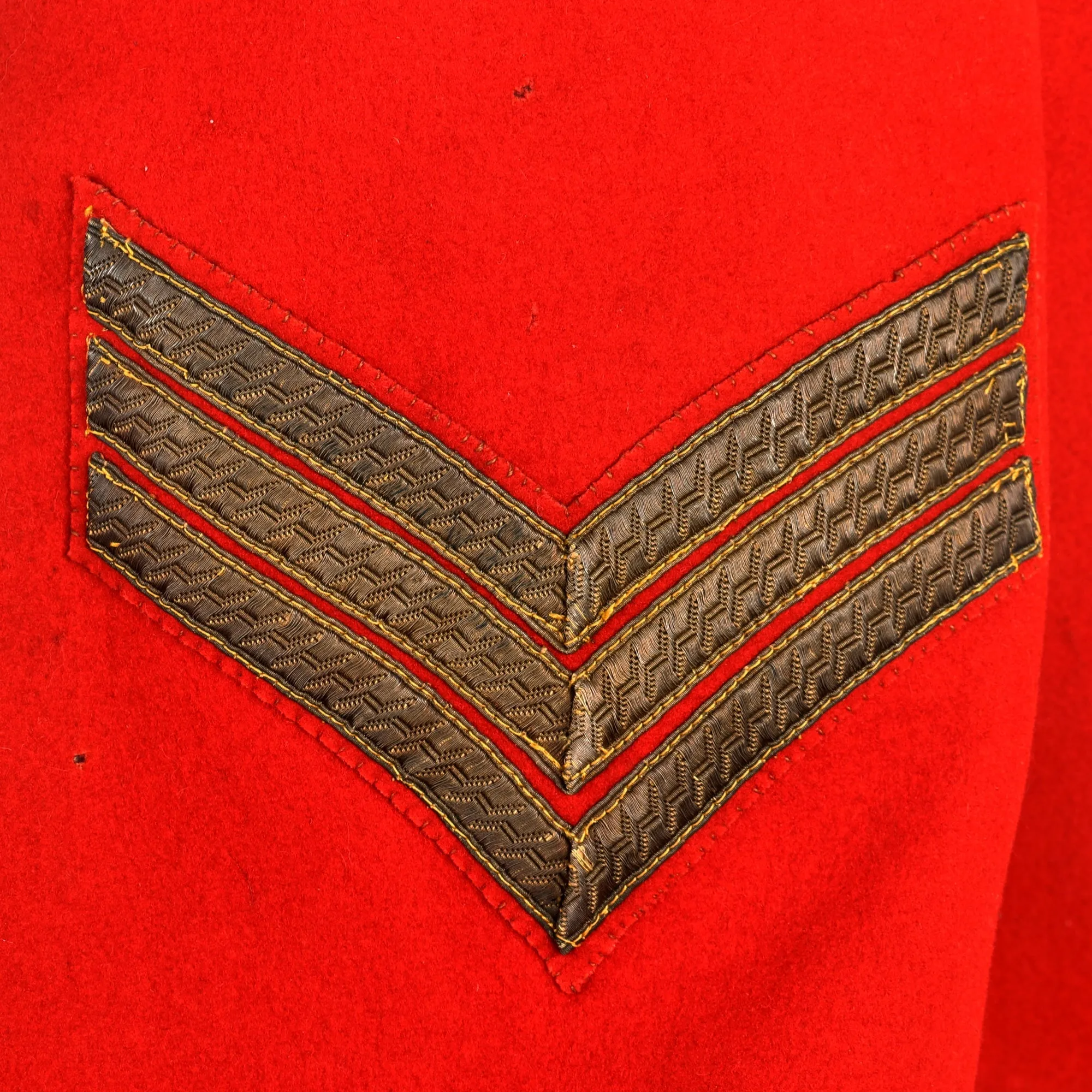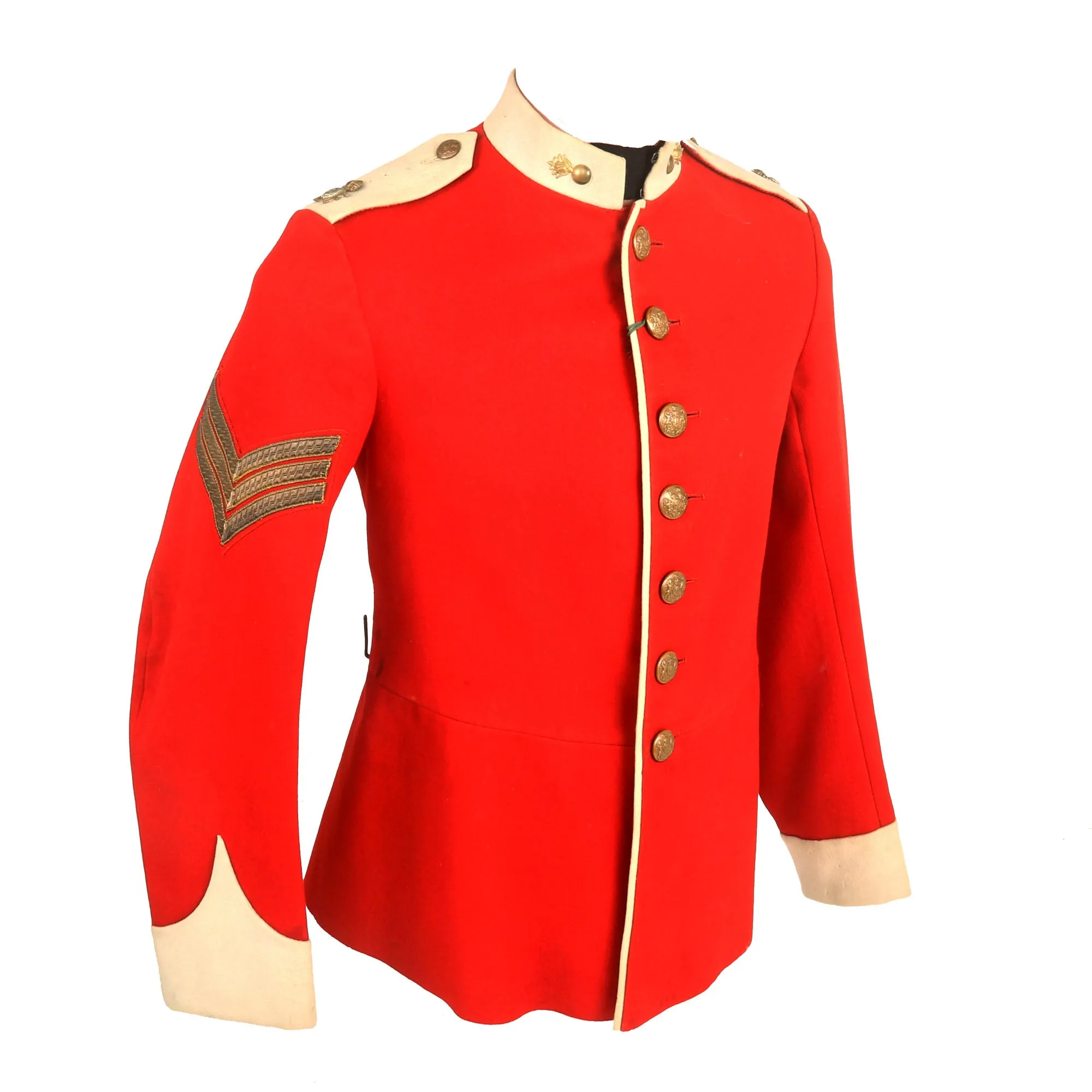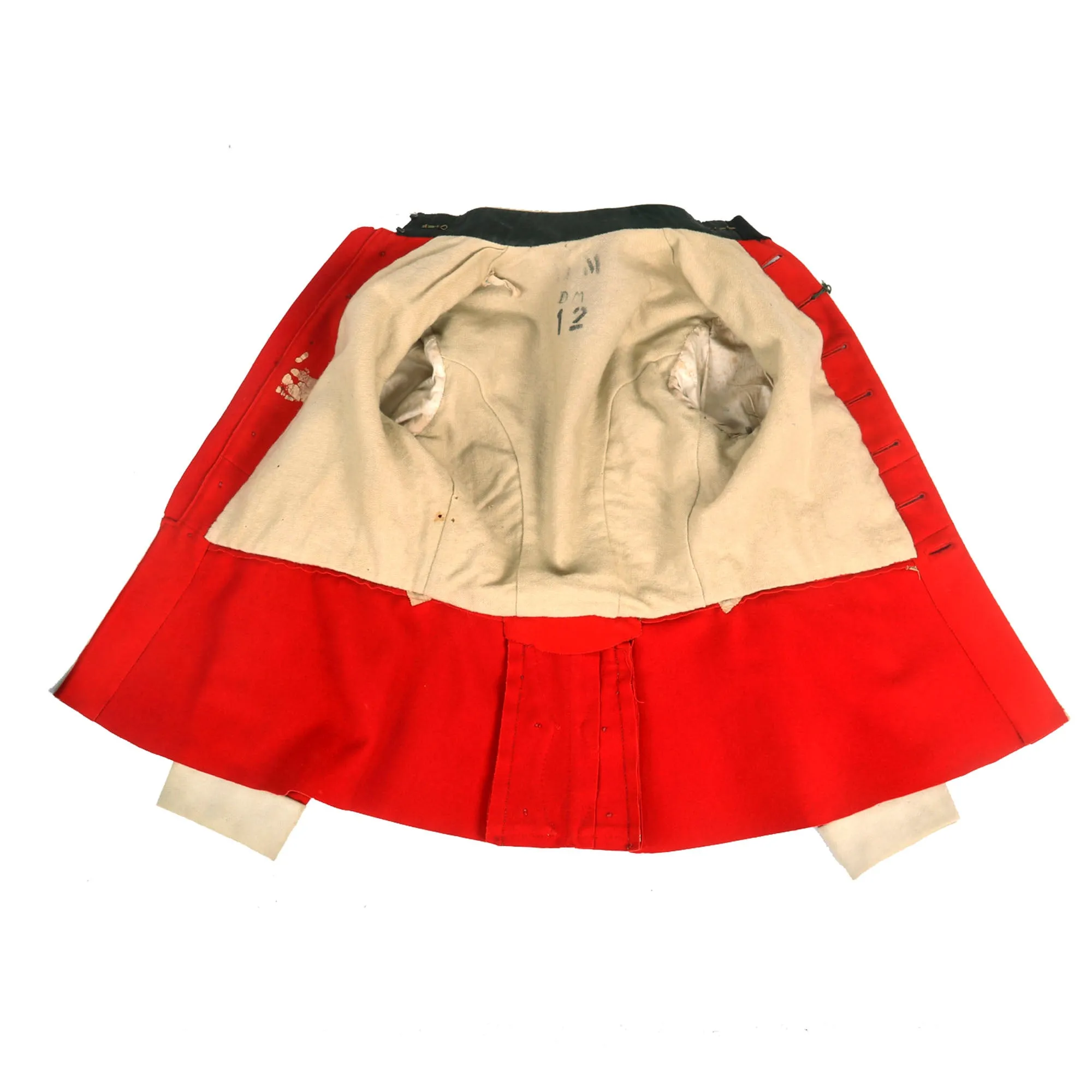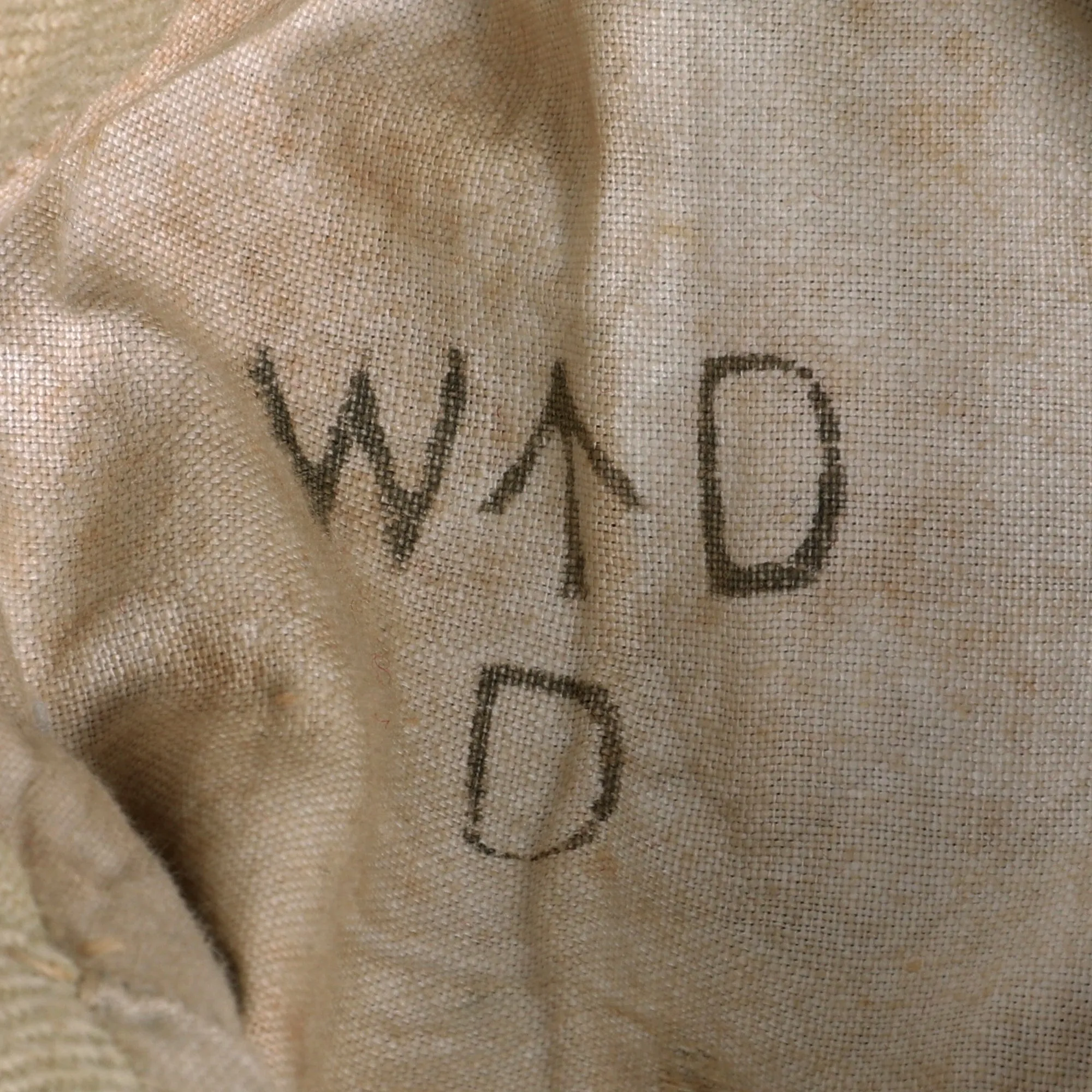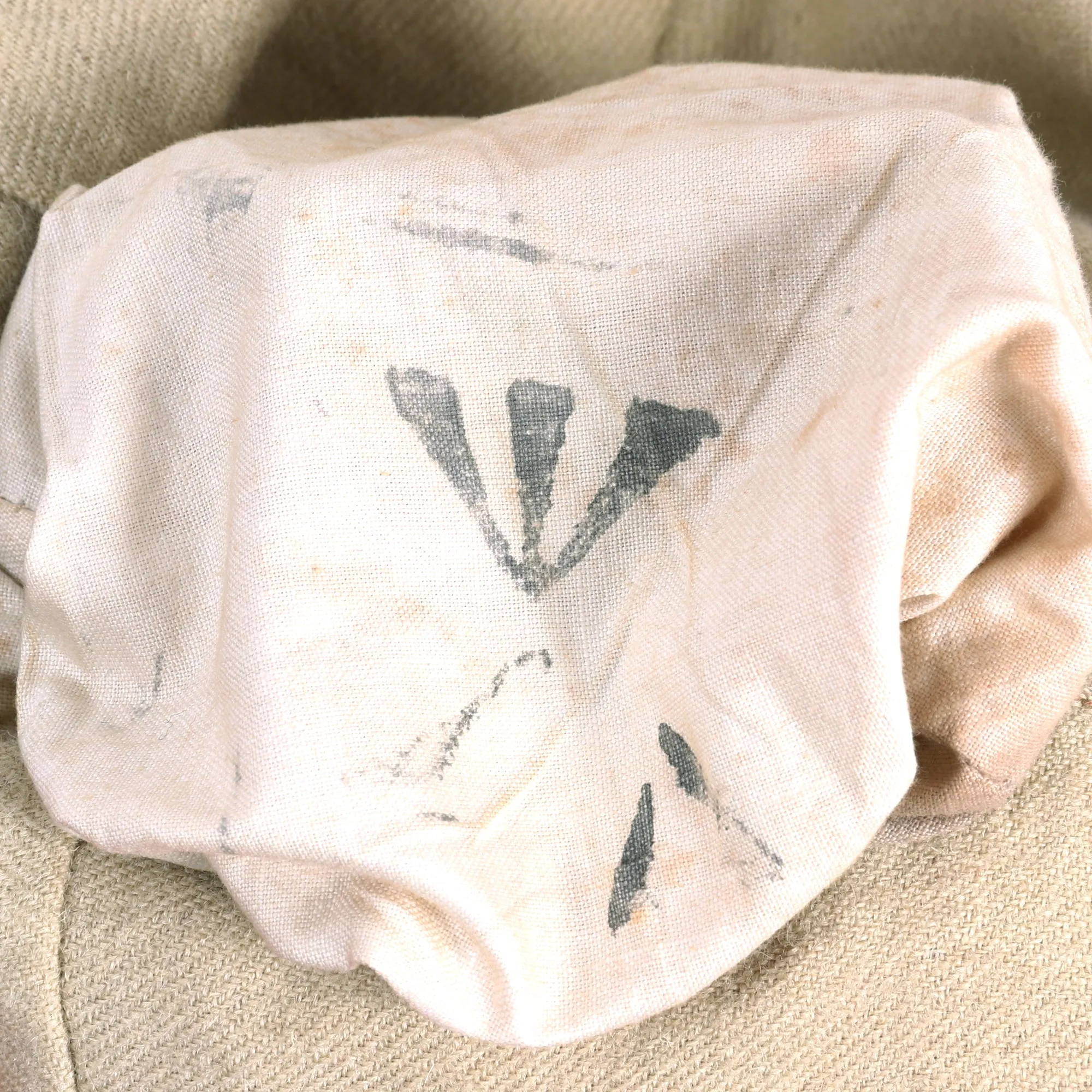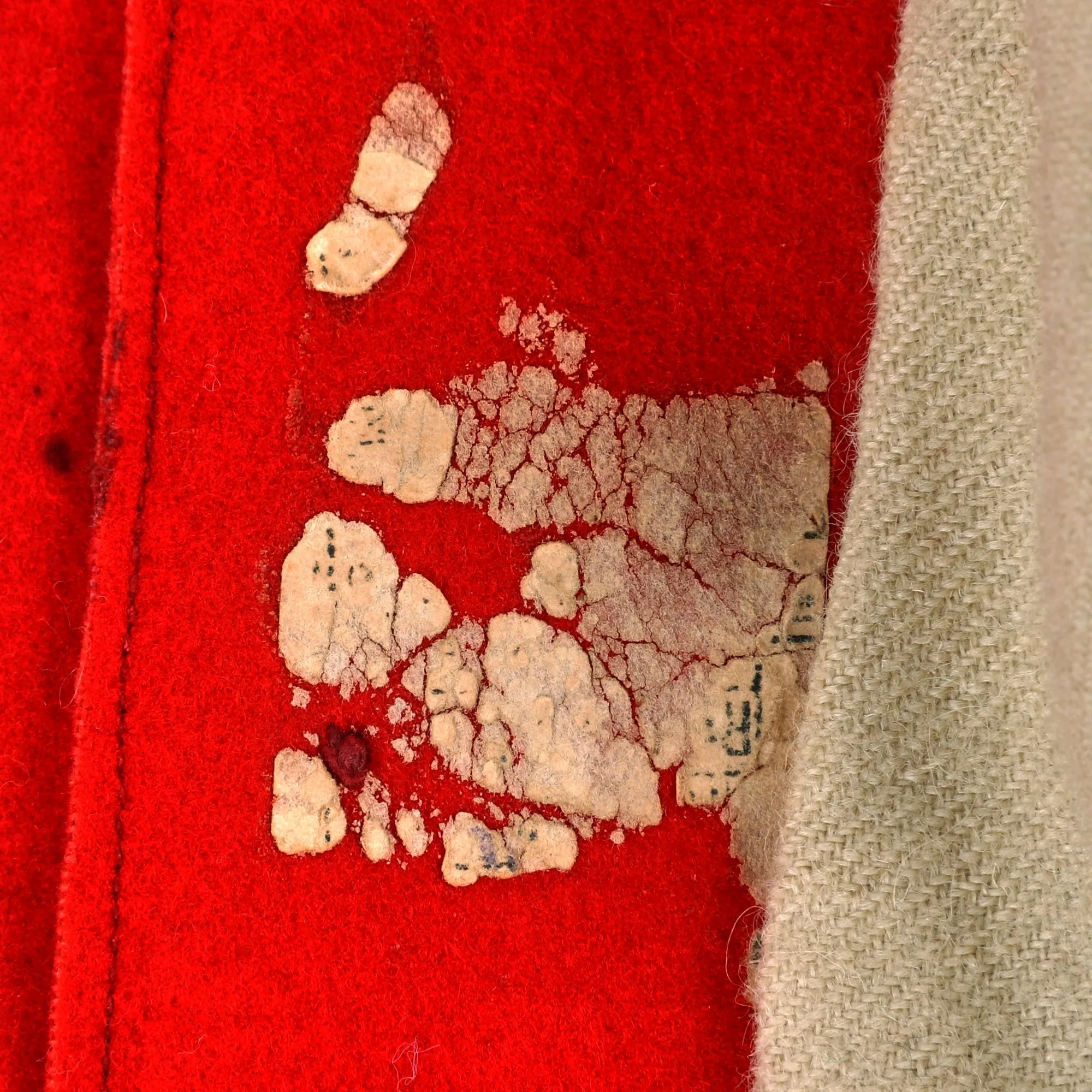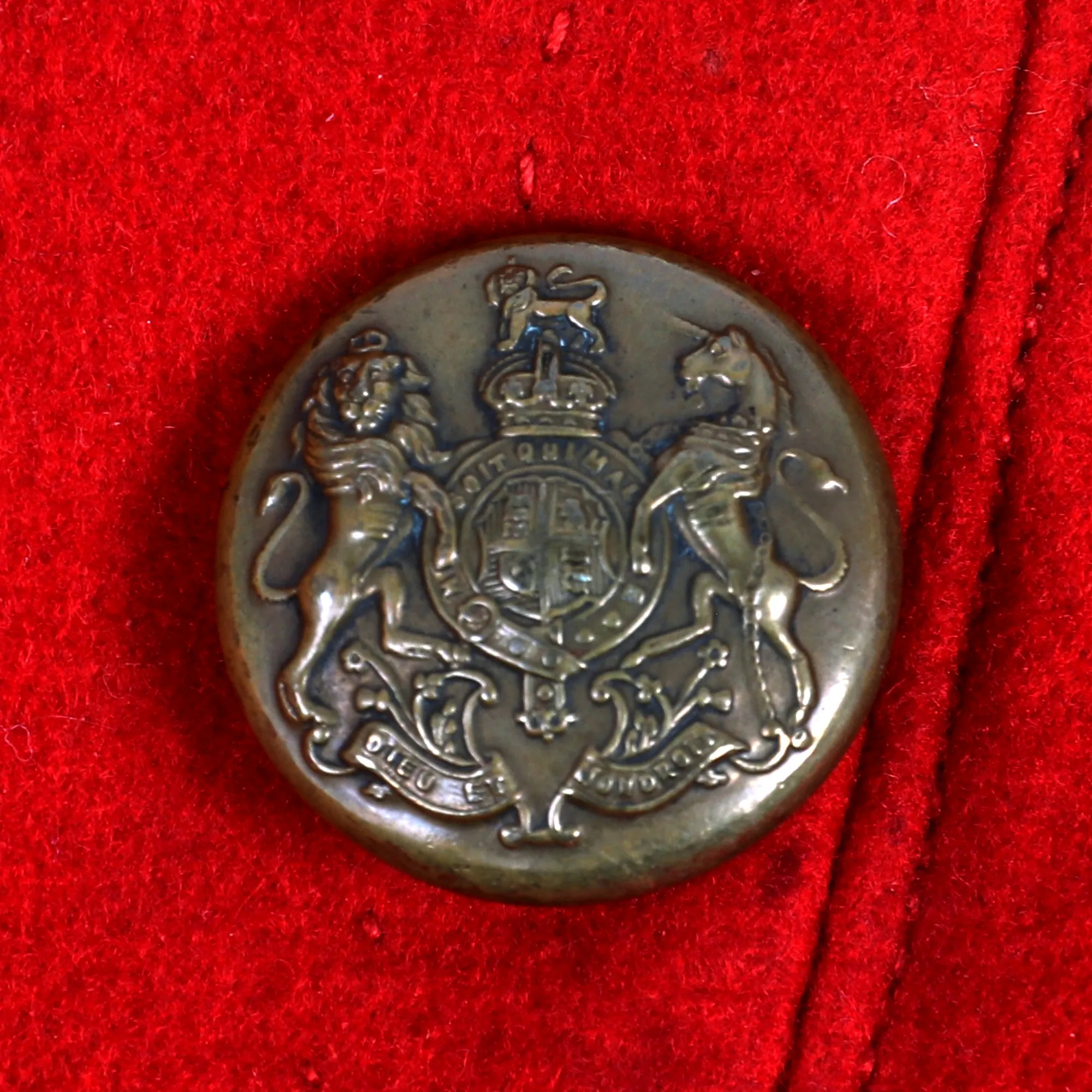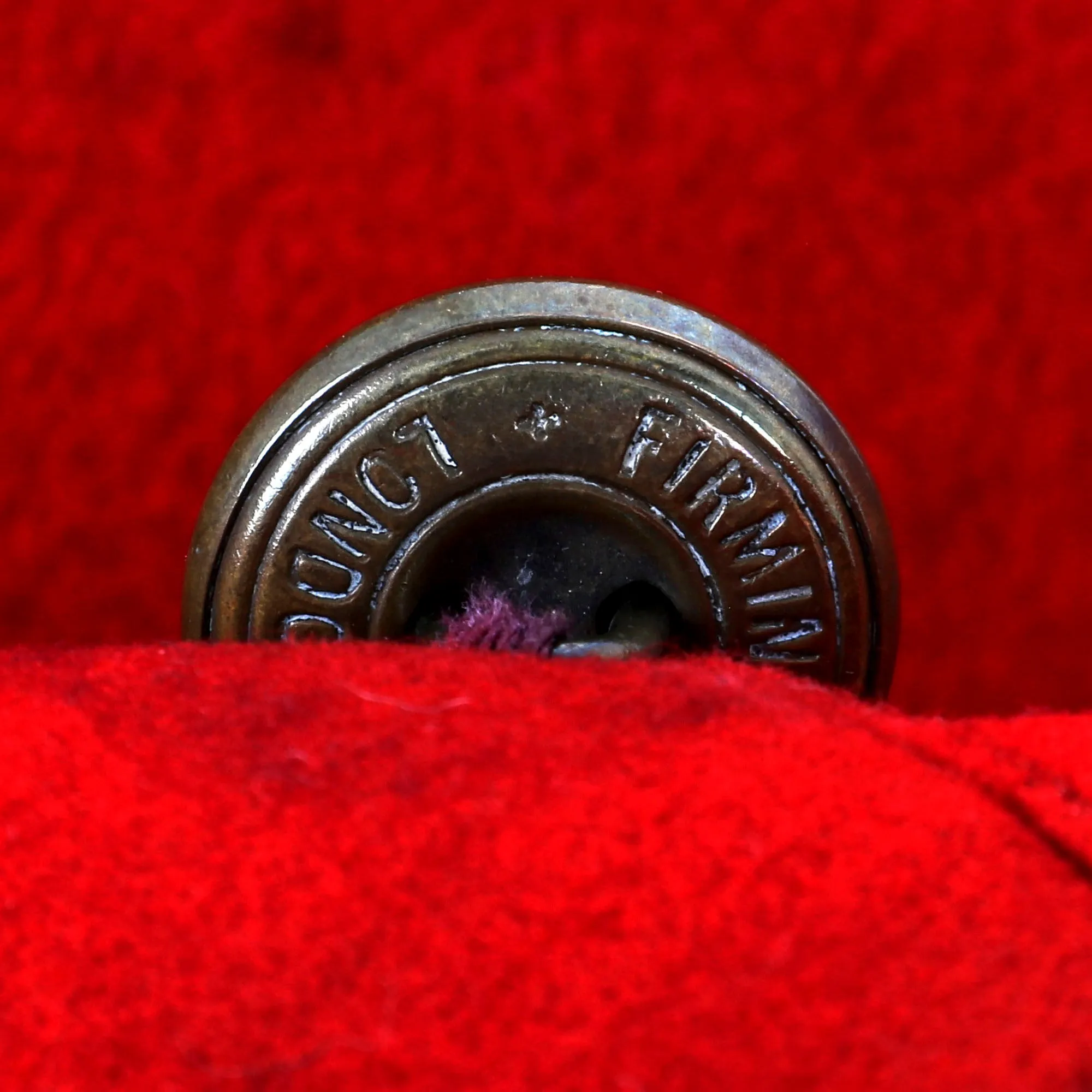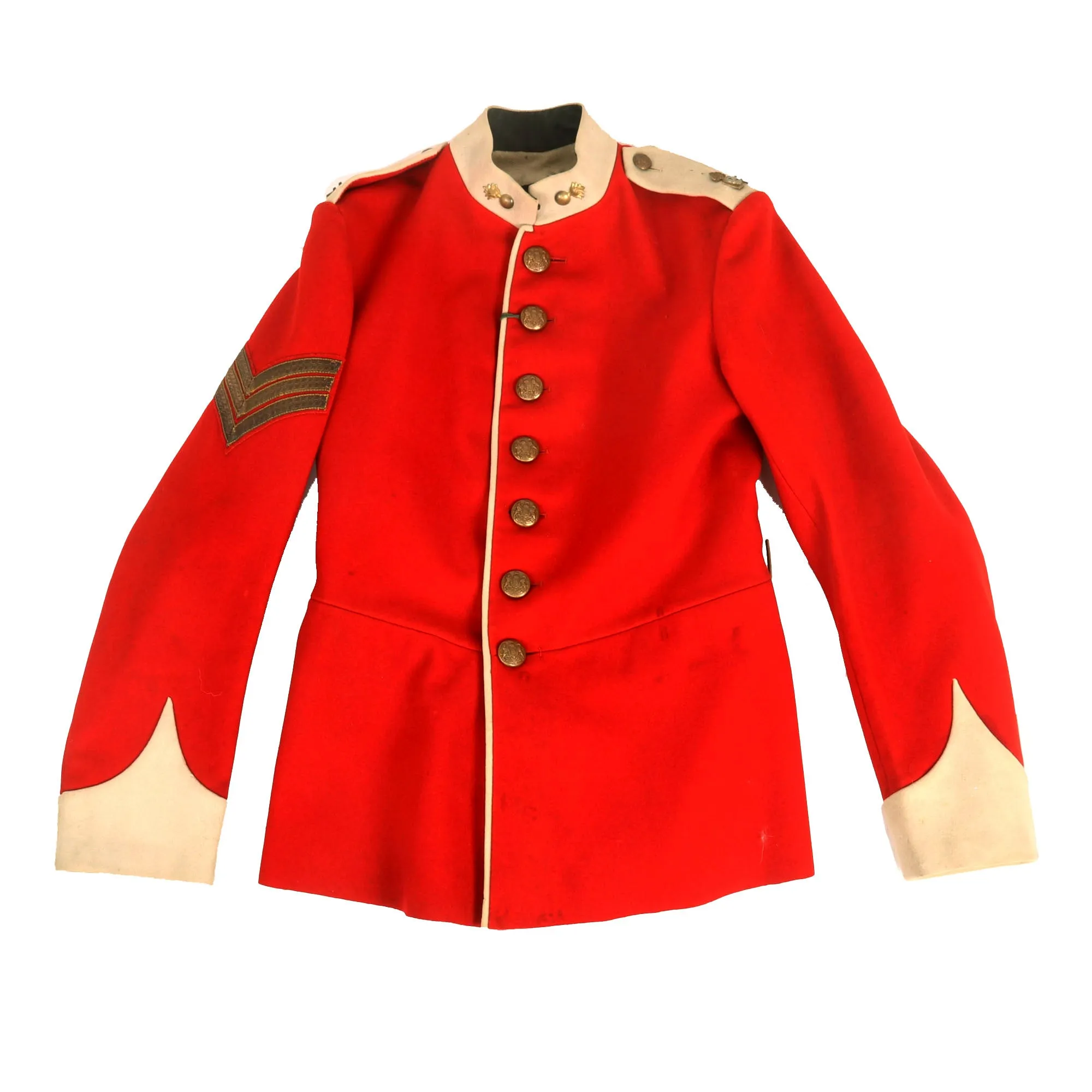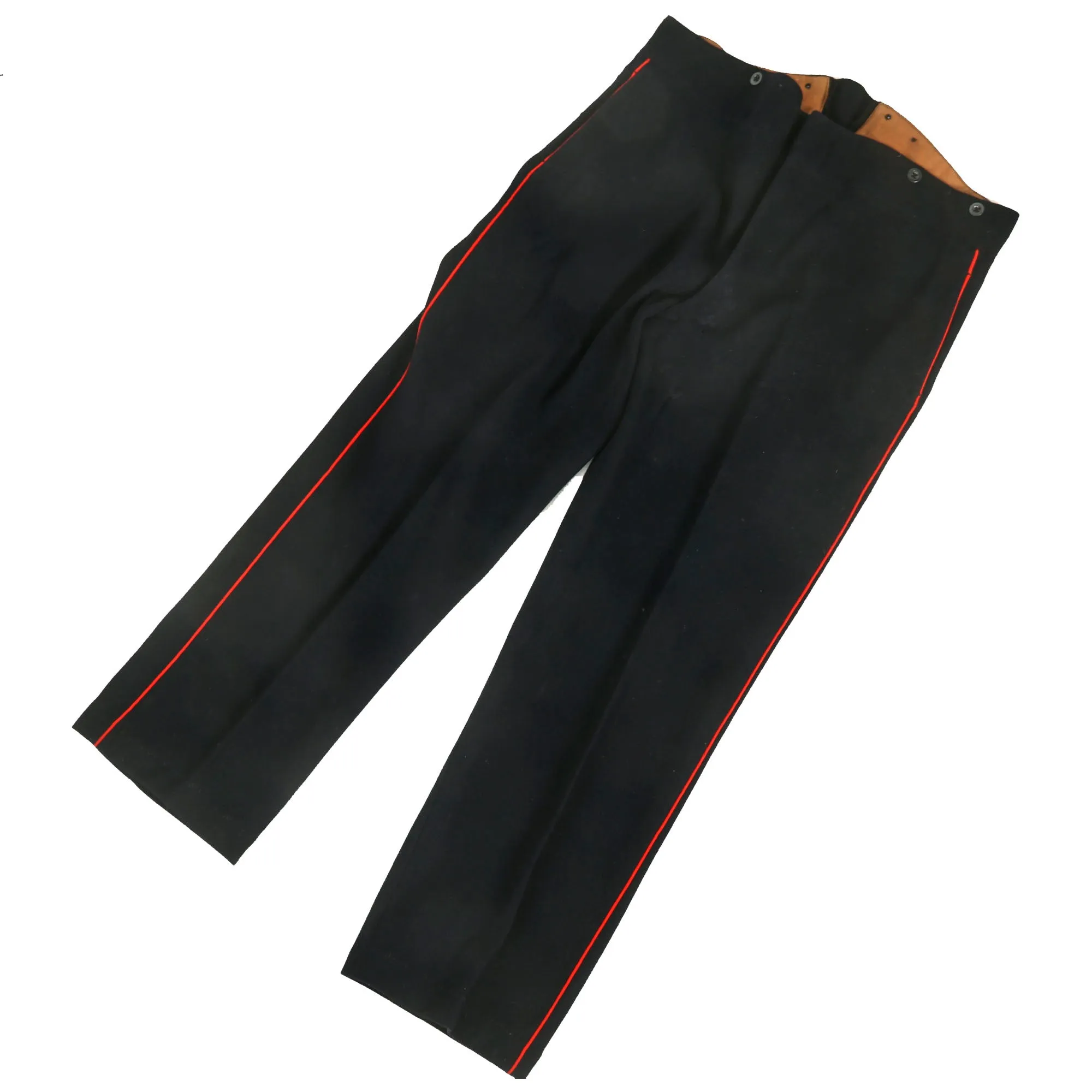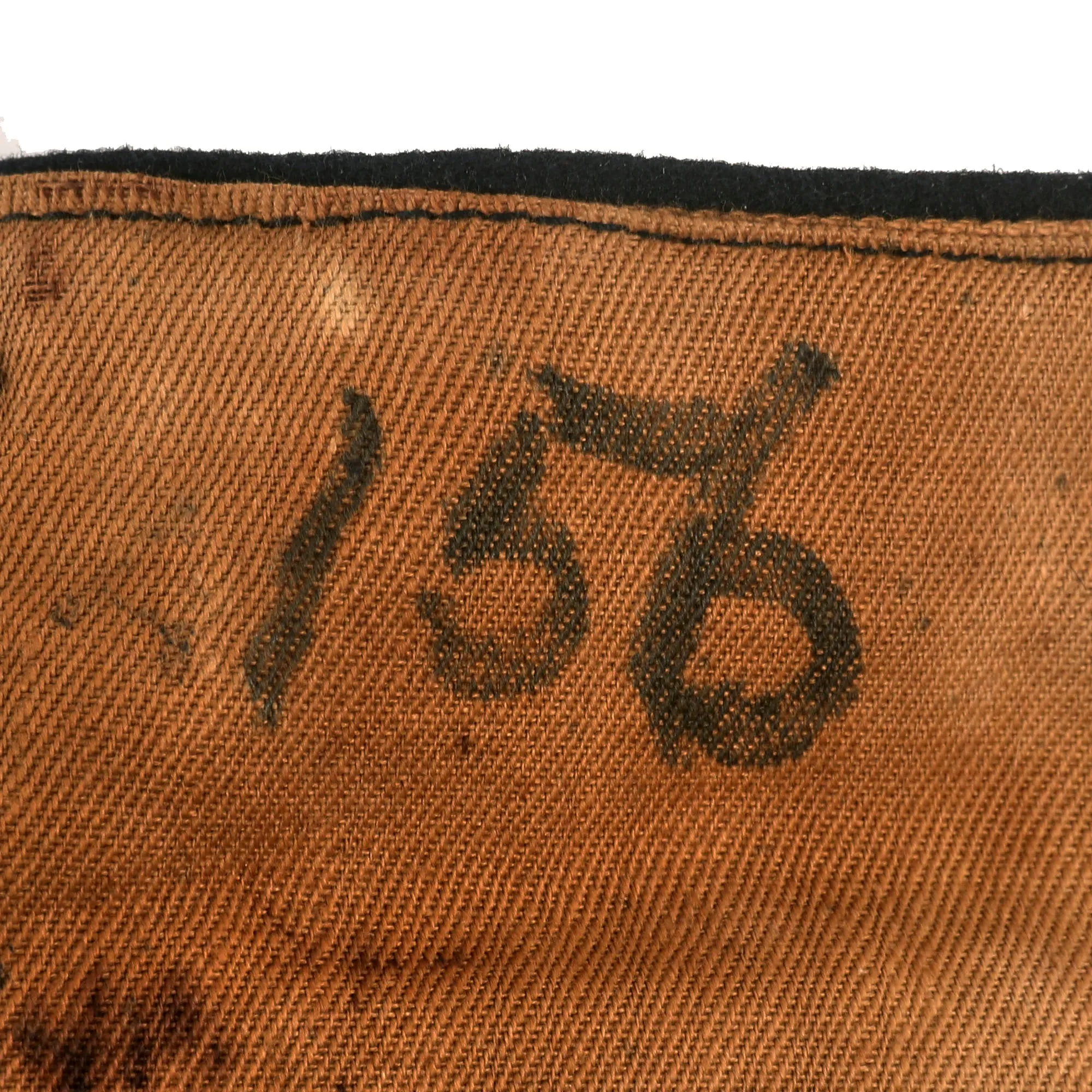Original Item: Only One Available. This is a fine example of a Pre WWI era British Scarlet Red tunic for a Sergeant in the Lancashire Fusiliers. The overall condition of the uniform is quite nice with great insignia, but there are areas of age toning and the expected but unfortunate moth nips. The trousers are in similar attractive condition and are presented without any extensive damage.
Red coat or scarlet tunic was a military garment used widely, though not exclusively worn, by most regiments of the British Army, Royal Marines, and some colonial units within the British Empire, from the 17th to the 20th centuries. The scarlet tunic continues to be used into the 21st century, with several armed forces of the Commonwealth of Nations adopting them as their full dress and mess dress uniforms. The uniform and term "redcoat" may have originated in 16th century Tudor Ireland as a derogatory term for the British, as British soldiers in Lord Lieutenant of Ireland's army wore red coats, the first time English and Scottish soldiers under English command and later British collectively had a red uniform. The term was then brought to America and Europe by Irish emigrants.
From the mid-17th century to the 19th century, the uniform of most British soldiers (apart from artillery, rifles and light cavalry) included a madder red coat or coatee. From 1873 onwards, the more vivid shade of scarlet was adopted for all ranks, having previously been worn only by officers, sergeants and all ranks of some cavalry regiments.
The tunic is a fine example of a Sergeants’ scarlet coat and is constructed of kersey wool with an off white kersey wool lining, collar, cuffs and shoulder boards. The coat is secured by 7 General Service buttons with matching buttons on the shoulders and the tails on the back, all of which are present. The interior has all the standard “Broad Arrow” markings present in the sleeves. There are initials present, but no name could be found.
A wonderful example that comes more than ready for further research and display.
Approximate Measurements:
Collar to shoulder: 9.5"
Shoulder to sleeve: 24.5”
Shoulder to shoulder: 14.5”
Chest width: 17"
Waist width: 16"
Hip width: 20"
Front length: 27"
Lancashire Fusiliers
The Lancashire Fusiliers was a line infantry regiment of the British Army that saw distinguished service through many years and wars, including the Second Boer War, the First and Second World Wars, and had many different titles throughout its 280 years of existence. In 1968 the regiment was amalgamated with the other regiments of the Fusilier Brigade – the Royal Northumberland Fusiliers, Royal Warwickshire Fusiliers and the Royal Fusiliers (City of London Regiment) – to form the current Royal Regiment of Fusiliers.
Lancashire Fusiliers (1881–1908)
The regiment was not superficially affected by the Cardwell Reforms of the 1870s – as it already possessed two battalions, there was no need for it to amalgamate with another regiment. However, in setting its depot at Wellington Barracks in Bury from 1873, it lost its West Country affiliations. This was exacerbated by the Childers reforms of 1881. Under the reforms the regiment became The Lancashire Fusiliers on 1 July 1881. Under the new arrangements each county regiment had two Militia battalions attached to it: these were found by the 7th Royal Lancashire Militia (Rifles), raised in 1855 and recruited from Bury, Manchester and Salford. This formed the 3rd and 4th Battalions of the Lancashire Fusiliers. In addition, Rifle Volunteer Corps were attached to their local regiments. In 1883 the 8th Lancashire Rifle Volunteers (raised at Bury on 22 August 1859) became the 1st Volunteer Battalion, Lancashire Fusiliers, and the 12th Lancashire Rifle Volunteers (originally the 24th, raised at Rochdale in February 1860) became the 2nd Volunteer Battalion. In 1886 the 56th Lancashire Rifle Volunteers (raised at Salford on 5 March 1860) was transferred from the Manchester Regiment to become the 3rd Volunteer Battalion.
In common with other regiments recruited from populous urban areas, the Lancashire Fusiliers raised two further regular battalions, the 3rd in 1898, and the 4th in March 1900. This necessitated adjustments to the numbers of the Militia battalions, which became the 5th and 6th battalions. However, the 3rd and 4th Regular battalions were disbanded in 1906.
The 1st Battalion was stationed in Ireland from 1881 to September 1885, and again from April 1891 to 1897. In 1899 it was posted to Crete, and from 1901 at Malta.
The 2nd Battalion was stationed in British India from 1881 to 1898, when it took part in Kitchener's campaign to reconquer the Sudan and fought at the Battle of Omdurman. After a year at Malta, the battalion was posted to South Africa in December 1899, following the outbreak of the Second Boer War two months earlier.
During the Second Boer War, the 2nd Battalion saw action at the Battle of Spion Kop in January 1900 and took part in the Relief of Ladysmith in February 1900. The battalion served in South Africa throughout the war, which ended with the Peace of Vereeniging in June 1902. About 570 officers and men left Cape Town on the SS Britannic in October that year, and was stationed at Aldershot after their return to the United Kingdom. The 5th and 6th (Militia) Battalions also served in South Africa, the 6th leaving with 650 men on 10 February 1900, and later being involved in a sharp action at Luckhoff. The 5th battalion served in the last year of the war. The battalions were awarded the battle honours South Africa 1900–01 (for the 6th) and South Africa 1901–02 (for the 5th). All three Volunteer Battalions also found 'service companies' of volunteers who served alongside the Regulars, and gained the battle honour South Africa 1900–1902 for their battalions.
Haldane Reforms
Under the Haldane Reforms of 1908, the Militia were redesignated Special Reserve, with the dual wartime role of Home Defence and providing drafts for the Regular Battalions. The Lancashire Fusiliers' militia became 3rd (Reserve) Battalion and 4th (Extra Reserve) Battalion, both based at Bury. The volunteers now became the Territorial Force (TF), with battalions numbered in sequence after the militia. Thus the 1st Volunteer Battalion at Castle Armoury in Bury became 5th Battalion, 2nd Volunteer Battalion at Baron Street in Rochdale became the 6th Battalion, and the 3rd Volunteer Battalion formed the 7th and 8th battalions both based at Cross Lane in Salford. These four battalions formed the Lancashire Fusiliers Brigade, in the East Lancashire Division of the TF, on the eve of the First World War.




